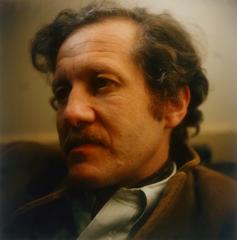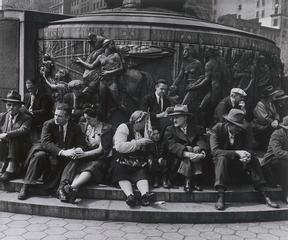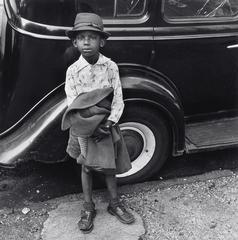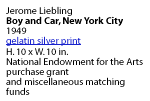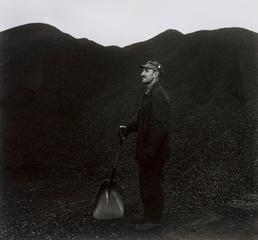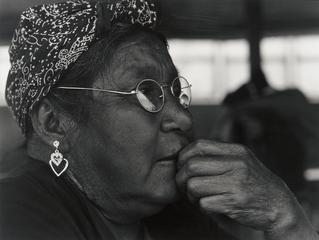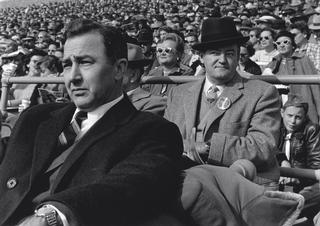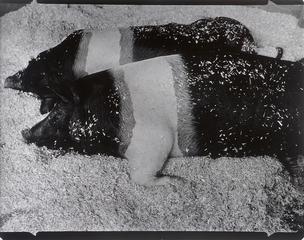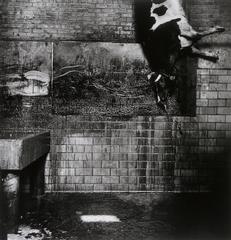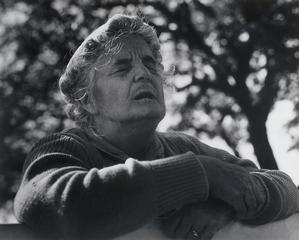|
My photographs
tried to find the politicians at their most wary, most vulnerable,
and perhaps most truthful moments. I wanted the photographs to reveal
the person through stance and stare, when he or she was most reflective
or off guard, in order to measure the person and event unfolding.
–Jerome
Liebling, The Minnesota Photographs, 1997
|
Besides teaching photography at
the University of Minnesota, Jerome Liebling was often hired by politicians
to make photos of their campaigns. Liebling was always on the lookout
for pictures that revealed a politician’s true character, even though
that wasn’t exactly his assignment.
This photograph, taken at a rally in Minneapolis, is a good example of
what the French photographer Henri Cartier-Bresson called the “decisive
moment.” The decisive moment is a concept that photographers everywhere
understand. Cartier-Bresson explains, “Sometimes you have the feeling
that here are all the makings of a picture–except for just one thing
that seems to be missing. You wait and wait, and then finally you press
the button–and you depart with the feeling (though you don’t
know why) that you’ve really got something. Later, to substantiate
this, you can take a print of this picture . . . and you’ll discover
that, if the shutter was released at the decisive moment, you have instinctively
fixed a geometric pattern without which the photograph would have been
both formless and lifeless.” (The Decisive Moment, 1952)
Liebling certainly caught the two politicians in the photo at a decisive
moment. Their faces at this moment tell a story about their temperaments–one
worried, uncomfortable and tense; the other relaxed, in control, with
a tiny triumphant smile on his face. It is this sort of attitude that
politicians don’t like to reveal, but it was just what Liebling was
looking for.
|
